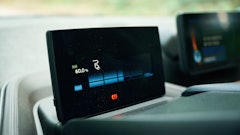
Toronto, Ontario — In this weekly electric and autonomous vehicle report, the European Union (EU) announced that electric vehicles will require battery passports; while German start-up Vay has developed a remote-driving rental system.
An electric identification
In a measure to reveal the origins and history of the raw materials in electric vehicle (EV) batteries, the European Union (EU) will soon require all EVs to have a battery passport.
According to the EU’s initial proposal, whoever makes the vehicle battery—whether this be an automaker or a third-party company—will be responsible for providing the details included in the passport.
However, when it comes to providing the passport details to dealers and owners, the main responsibility will fall on the manufacturer.
To help keep carmakers’ intellectual property safe, automakers will only have to show general information, without revealing exact battery composition.
The exact information to be provided for the passport hasn’t been identified yet, but there is a $7.6 million project called the Battery Pass Consortium that is currently working on developing the proposal further.
This project is a joint venture between 11 partners including BMW and Audi.
In the EU, the passports are projected to take effect by February, 2027, and the Union has been clear to stress that the process is not designed to hamper drivers while traveling, but to instead help provide more transparency between automakers, their battery suppliers and their customers.
At the moment, EV passports are not required in North America.
Not quite driverless driving
The German automotive start-up company, Vay, has recently deployed a not-so-driverless, driverless vehicle to help customers reach their destinations.
Rather than using AI to control their ‘autonomous vehicles,’ Vay is instead relying on a process known as “teledriving” wherein trained operators are stationed at a central location to remotely pilot vehicles to customers at identified pick-up locations.
When the vehicle reaches the intended customer—who can then use the vehicle like a rental car—the remote operator then hands over the full controls and the vehicle becomes available to be piloted by the customer.
The service officially went live on January 17 in Las Vegas, Nevada for its first trial run.
“With teledriving, a human is in charge,” Vay CEO and Co-founder Thomas von der Ohe originally told CNBC. “This allows us to handle complex maneuvres such as unprotected left turns, emergency situations and road works based on human perception and decision-making ability.”
By not relying on a full autonomous system, Vay hopes to offer a cheaper solution that isn’t as tightly geofenced as other more fully autonomous systems.






















